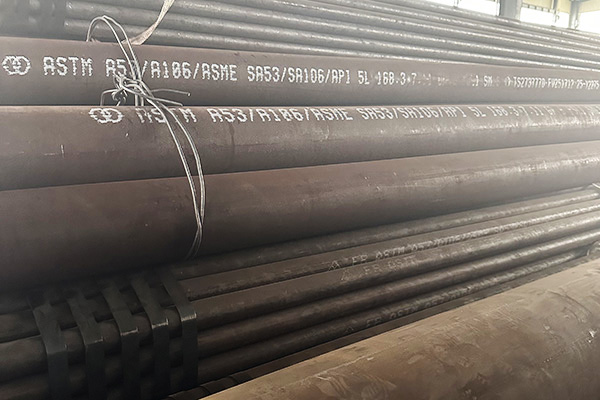

Application of Seamless Steel Pipes in Petroleum and Natural Gas Industry
Seamless steel pipes are extensively used in the petroleum and natural gas industry due to their excellent mechanical properties, corrosion resistance, and ability to withstand high pressure and temperature conditions. Their seamless construction provides uniform strength and reduces the risk of defects associated with welded seams, making them ideal for critical applications in exploration, production, transportation, and refining.
1. Exploration and Production
During drilling and extraction, seamless steel pipes serve as casing and tubing to support boreholes and facilitate the safe flow of oil and gas from reservoirs. Their high strength and toughness help withstand harsh downhole environments, including high pressures, temperatures, and corrosive fluids such as hydrogen sulfide (H₂S) and carbon dioxide (CO₂).
2. Transportation and Pipeline Systems
Seamless pipes are used to construct long-distance pipelines transporting crude oil, natural gas, and refined products. Their dimensional accuracy and consistent mechanical properties ensure reliable performance under high pressure and variable temperatures, reducing the risk of leaks and failures.
3. Refining and Processing Plants
In refineries and gas processing facilities, seamless steel pipes carry feedstock and products through various stages of heating, cooling, and chemical treatment. Pipes made from heat-resistant alloy steels withstand elevated temperatures and corrosive atmospheres, ensuring operational safety and efficiency.
4. Offshore and Subsea Applications
Offshore drilling rigs and subsea pipelines require pipes that resist corrosion from seawater and withstand mechanical stresses from ocean currents and temperature fluctuations. Seamless steel pipes, often with additional coatings or alloying, meet these stringent requirements.
5. High-Pressure and High-Temperature (HPHT) Environments
Seamless steel pipes manufactured from alloy grades such as ASTM A335 P91 or P92 are widely used in HPHT applications due to their excellent creep resistance, high strength, and thermal stability.
6. Compliance with Industry Standards
Seamless steel pipes used in the petroleum and natural gas sector comply with rigorous standards such as API 5L, ASTM A106, and ISO 3183, ensuring material quality, traceability, and performance.
Conclusion
The petroleum and natural gas industry relies heavily on seamless steel pipes for their robustness, reliability, and adaptability to extreme service conditions. Their application across upstream, midstream, and downstream sectors supports the safe and efficient production and transport of hydrocarbons worldwide.
References:
API 5L – Specification for Line Pipe
ASTM A106 – Standard Specification for Seamless Carbon Steel Pipe for High-Temperature Service
ISO 3183 – Petroleum and Natural Gas Industries – Steel Pipe for Pipeline Transportation Systems
ASME B31.8 – Gas Transmission and Distribution Piping Systems
Zhang, L., & Wang, Y. (2017). Materials for Oil and Gas Pipeline Engineering. Elsevier.





